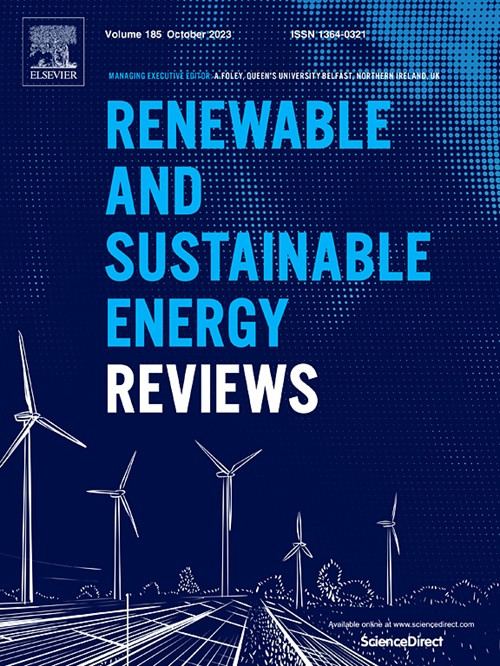Advances and perspectives of two-dimensional materials MXenes: Efficient catalysts for magnesium hydride
IF 16.3
1区 工程技术
Q1 ENERGY & FUELS
引用次数: 0
Abstract
Magnesium hydride (MgH2) has been considered as a promising solid-state hydrogen storage material due to its advantages, including high gravimetric (∼7.6 wt%), environmental friendliness, and excellent reversibility. However, the stable thermodynamic and sluggish hydrogen absorption/desorption kinetics of MgH2 significantly hinder its commercial application. Considerable efforts have been dedicated to lowering the dehydrogenation temperature and facilitating the hydrogen absorption/desorption reaction rate of MgH2, resulting in substantial progress. Catalyzing is recognized as one of the most effective strategies for ameliorating the hydrogen storage performances of MgH2. Over the past years, two-dimensional (2D) transition metal carbides or nitrides or carbonitrides, i.e., MXenes, have gained widespread applications in energy storage, biomedicine, gas separation and water purification, owing to their 2D layered structure, high specific surface area, tunable surface terminations, and exceptional thermal stability. In particular, MXenes have demonstrated efficiency as catalysts for the de/hydrogenation reactions of MgH2. Herein, this review article systematically reviews the advancement of MXenes, covering their structure, synthesis methods, and potential applications for storing hydrogen. Meanwhile, it comprehensively summarizes the effect of MXenes as catalysts in improving the hydrogen absorption/desorption properties of MgH2, covering three aspects: MXenes themselves, MXenes derivatives and MXenes composites, while highlighting their respective catalytic mechanisms. Furthermore, the future research and development of MXenes catalysts and their application in MgH2 are elucidated.
二维材料MXenes:氢化镁高效催化剂的研究进展与展望
氢化镁(MgH2)由于其高质量(约7.6 wt%)、环境友好和优异的可逆性等优点,被认为是一种很有前途的固态储氢材料。然而,MgH2的热力学稳定性和缓慢的吸氢/解吸动力学严重阻碍了其商业化应用。在降低脱氢温度和提高MgH2吸氢/脱氢反应速率方面已经做了大量的工作,取得了实质性的进展。催化是改善MgH2储氢性能最有效的方法之一。在过去的几年里,二维(2D)过渡金属碳化物或氮化物或碳氮化物,即MXenes,由于其二维层状结构、高比表面积、可调表面末端和优异的热稳定性,在储能、生物医学、气体分离和水净化等领域得到了广泛的应用。特别是,MXenes作为MgH2脱氢化反应的催化剂已经被证明是有效的。本文系统地综述了MXenes的结构、合成方法以及在储氢方面的潜在应用。同时,全面总结了MXenes作为催化剂在改善MgH2吸氢/解吸性能方面的作用,涵盖了MXenes本身、MXenes衍生物和MXenes复合材料三个方面,并重点介绍了各自的催化机理。展望了MXenes催化剂的未来研究与发展,并对其在MgH2中的应用进行了展望。
本文章由计算机程序翻译,如有差异,请以英文原文为准。
求助全文
约1分钟内获得全文
求助全文
来源期刊

Renewable and Sustainable Energy Reviews
工程技术-能源与燃料
CiteScore
31.20
自引率
5.70%
发文量
1055
审稿时长
62 days
期刊介绍:
The mission of Renewable and Sustainable Energy Reviews is to disseminate the most compelling and pertinent critical insights in renewable and sustainable energy, fostering collaboration among the research community, private sector, and policy and decision makers. The journal aims to exchange challenges, solutions, innovative concepts, and technologies, contributing to sustainable development, the transition to a low-carbon future, and the attainment of emissions targets outlined by the United Nations Framework Convention on Climate Change.
Renewable and Sustainable Energy Reviews publishes a diverse range of content, including review papers, original research, case studies, and analyses of new technologies, all featuring a substantial review component such as critique, comparison, or analysis. Introducing a distinctive paper type, Expert Insights, the journal presents commissioned mini-reviews authored by field leaders, addressing topics of significant interest. Case studies undergo consideration only if they showcase the work's applicability to other regions or contribute valuable insights to the broader field of renewable and sustainable energy. Notably, a bibliographic or literature review lacking critical analysis is deemed unsuitable for publication.
 求助内容:
求助内容: 应助结果提醒方式:
应助结果提醒方式:


